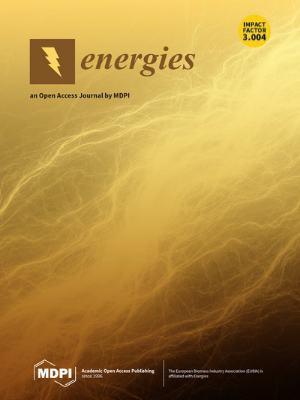Enhancing Wind Farm Performance through Axial Induction and Tilt Control: Insights from Wind Tunnel Experiments
IF 3.2
4区 工程技术
Q3 ENERGY & FUELS
引用次数: 0
Abstract
Static axial induction control and tilt control are two strategies that have the potential to increase power production in wind farms, mitigating wake effects and increasing the available power for downstream turbines. In this study, wind tunnel experiments are performed to evaluate the efficiency of these two techniques. First, the axial induction of upstream turbines in wind farms comprising two, three, and five turbines is modified through the tip-speed ratio. This strategy is found to be ineffective in increasing power extraction. Next, the power extraction and flow through a two-turbine wind farm are evaluated, considering different tilt angles for the upstream turbine, under two levels of incoming flow turbulence intensities and turbine spacing distances. It is shown that forward tilting increases the overall power extraction by deflecting the wake downwards and promoting the entrainment of high-speed fluid in the upper shear layer, regardless of the turbine spacing distance and turbulence intensity level. Also, the wake is seen to recover faster due to the increased shear between the wake and the outer flow. Tilting a turbine backward deflects the wake upwards and pulls low-speed flow from under the turbine into the wake space, increasing the available power for downstream turbines, but it is not enough to increase global power extraction. Moreover, since the wake deflection under backward tilting is not limited by ground blockage, it leads to larger secondary steering compared with forward tilting. Finally, it is demonstrated that the secondary steering of the downstream turbine’s wake influences the flow encountered by a turbine positioned farther downstream.通过轴向感应和倾斜控制提高风电场性能:风洞试验的启示
静态轴向感应控制和倾斜控制是两种有可能提高风电场发电量的策略,可减轻尾流效应,增加下游涡轮机的可用功率。本研究通过风洞实验来评估这两种技术的效率。首先,在由两台、三台和五台涡轮机组成的风电场中,上游涡轮机的轴向感应是通过叶尖速度比来改变的。结果发现,这一策略在提高功率提取方面效果不佳。接下来,考虑到上游涡轮机的不同倾斜角度,在两级入流湍流强度和涡轮机间距的条件下,评估了双涡轮机风电场的功率提取和流过情况。结果表明,无论涡轮机间距和湍流强度水平如何,前倾都会使尾流向下偏转,并促进高速流体在上剪切层中的夹带,从而提高总体功率提取率。此外,由于尾流与外部气流之间的剪切力增大,尾流恢复速度更快。涡轮机向后倾斜会使尾流向上偏转,并将涡轮机下方的低速气流拉入尾流空间,从而增加下游涡轮机的可用功率,但这不足以增加总功率提取。此外,由于后倾时的尾流偏转不受地面阻挡的限制,因此与前倾相比,后倾会导致更大的二次转向。最后,还证明了下游涡轮机尾流的二次转向会影响位于更下游的涡轮机所遇到的气流。
本文章由计算机程序翻译,如有差异,请以英文原文为准。
求助全文
约1分钟内获得全文
求助全文
来源期刊

Energies
ENERGY & FUELS-
CiteScore
6.20
自引率
21.90%
发文量
8045
审稿时长
1.9 months
期刊介绍:
Energies (ISSN 1996-1073) is an open access journal of related scientific research, technology development and policy and management studies. It publishes reviews, regular research papers, and communications. Our aim is to encourage scientists to publish their experimental and theoretical results in as much detail as possible. There is no restriction on the length of the papers. The full experimental details must be provided so that the results can be reproduced.
 求助内容:
求助内容: 应助结果提醒方式:
应助结果提醒方式:


